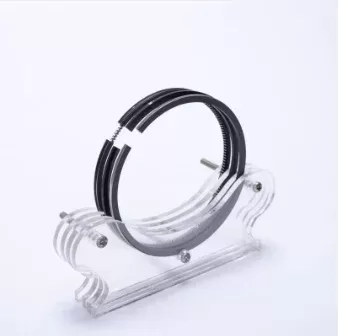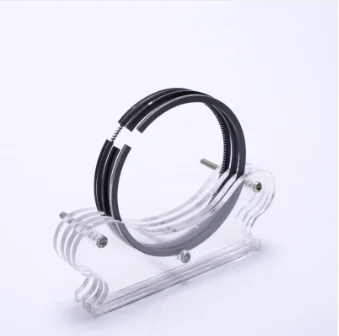Notifications

5 minutes, 43 seconds
-4 Views 0 Comments 0 Likes 0 Reviews

In the automotive and machinery industries, the efficiency of an engine is paramount. One of the critical components that significantly influence engine performance is the piston ring. High efficiency general engine piston rings have emerged as a game-changer, offering numerous advantages that enhance engine performance, reduce emissions, and improve fuel economy.

One of the most significant selling points of high efficiency piston rings lies in their enhanced wear resistance. Manufacturers have developed advanced material compositions, incorporating alloys and coatings that significantly increase the rings' durability. These materials not only resist wear but also minimize friction, leading to improved engine performance and longer service life.
In addition to material improvements, the profiles of high efficiency piston rings have been optimized to reduce wear. The design focuses on minimizing contact areas with the cylinder wall, thus distributing the load more evenly. This results in less wear and tear, maintaining optimal sealing performance over extended periods.
Sealing efficiency is another critical aspect of piston rings, and high efficiency models excel in this regard. Advanced coating technologies, such as plasma spray and physical vapor deposition (PVD), are employed to create a smooth, hard-wearing surface that enhances sealing. These coatings reduce blow-by, which is the leakage of combustion gases past the piston rings into the crankcase, thereby maintaining engine compression and power output.
Precision manufacturing techniques ensure that high efficiency piston rings fit perfectly within the cylinder bore. Tight tolerances and meticulous attention to detail during production result in rings that maintain consistent sealing performance throughout their lifespan. This consistency is vital for maintaining engine efficiency and reducing emissions.
High-efficiency piston rings often feature low-friction coatings that minimize the amount of energy lost to friction. These coatings reduce the drag between the rings and the cylinder wall, leading to improved fuel economy and reduced wear. Lower friction also translates to smoother engine operation, enhancing driver comfort and reducing noise.
Effective oil control is another key selling point of high-efficiency piston rings. The design incorporates features that regulate oil consumption, ensuring that only the necessary amount of oil reaches the cylinder walls for lubrication. This reduces oil burning and smoke emissions, contributing to cleaner engine operation and lower maintenance costs.
The ability to manage heat is crucial for engine performance, and high efficiency piston rings are designed with this in mind. Heat-resistant materials and coatings ensure that the rings can withstand high temperatures without degrading. This enhances durability and maintains sealing performance even under extreme operating conditions.
Moreover, the design of high efficiency piston rings facilitates better heat transfer away from the combustion chamber. This helps to keep engine temperatures within optimal ranges, reducing the risk of overheating and improving overall engine reliability.
The enhanced sealing efficiency and reduced friction of high-efficiency piston rings contribute to lower emissions. By minimizing blow-by and oil consumption, these rings help to reduce harmful pollutants such as hydrocarbons, nitrogen oxides, and particulate matter. This makes them an ideal choice for modern engines that are subject to stringent emission regulations.
Many manufacturers of high efficiency piston rings also adopt sustainable manufacturing practices. This includes using recyclable materials, minimizing waste, and optimizing production processes to reduce energy consumption. These practices contribute to a smaller environmental footprint, aligning with the growing trend towards eco-friendly automotive technology.
In conclusion, JYPR high efficiency general engine piston rings offer a multitude of performance advantages that make them an invaluable upgrade for modern engines. Enhanced wear resistance, improved sealing efficiency, reduced friction and oil consumption, enhanced thermal management, and environmental benefits are just a few of the key selling points. By incorporating these advanced piston rings, engine manufacturers can significantly improve engine performance, durability, and compliance with emission standards. As technology continues to evolve, high-efficiency piston rings will undoubtedly play an increasingly important role in the automotive industry.
Analysis of Performance Advantages of High Efficiency General Engine Piston Rings

